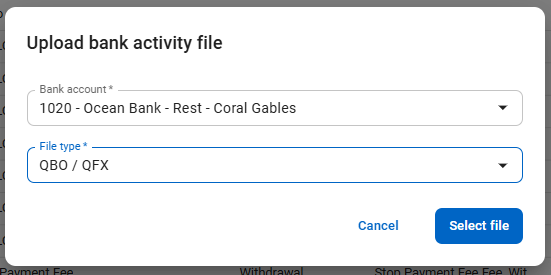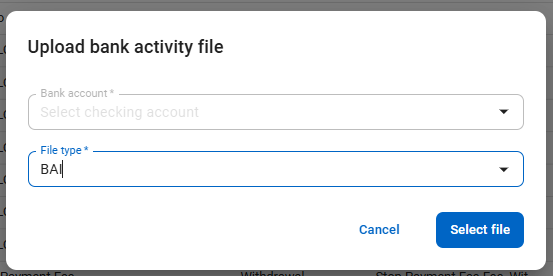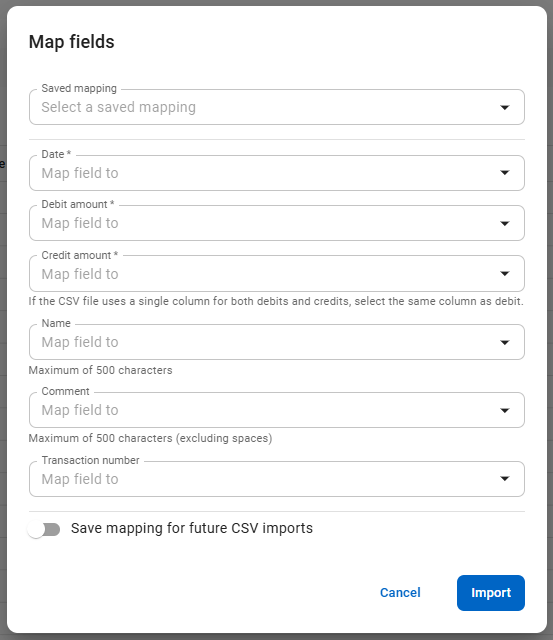This article references the New Bank Activity Experience which is being enabled for all customers through January 2026.
Learn more about the Bank Activity update.
Bank activity imports are used to upload transaction data from financial institutions into R365. This method requires downloading a file from the banking institution and importing it into the Bank Activity page. Manual imports give the user control over what data is imported as well when it is uploaded.
R365 supports importing the following bank file types: BAI, QBO, QFX, and CSV.
Imported transaction data can be used to create and match deposits, withdrawals, and AP payments. Transactions matched in Bank Activity are automatically selected during the reconciliation process.
Prior to importing bank activity, bank account records need to be setup in R365. Users will be prompted to select the bank accounts to be used for upload in the import process.
Bank activity can also be uploaded through a Direct Bank Connection or BAI File Transmission.
QBO & QFX Files
When QBO or QFX is selected, the system reads transaction details directly from the file structure.

BAI Files
When BAI is selected, the Bank Account field is disabled.
The system matches the bank account number from the BAI file with the bank account record in R365. An exact match is required to proceed with the import.
Bank activity can also be uploaded through a BAI File Transmission.

CSV Files
For CSV imports, users are required to map fields from the bank file to the corresponding columns on the Bank Activity page. Learn more about mapping fields for CSV imports.
